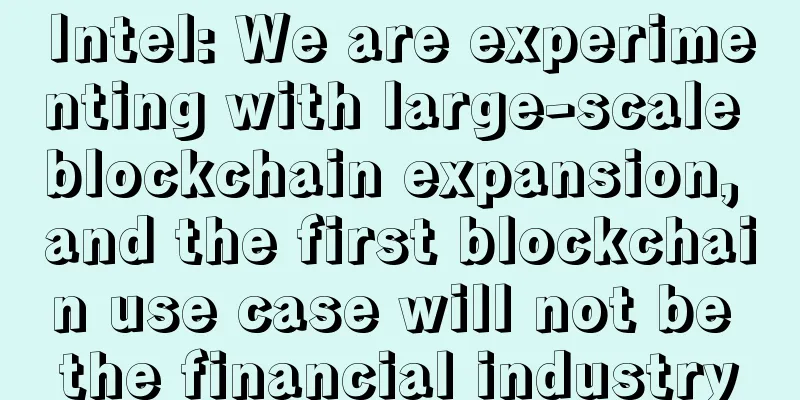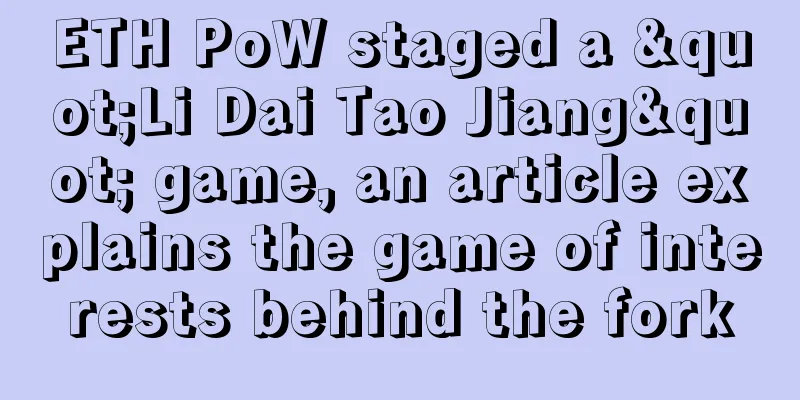Intel: We are experimenting with large-scale blockchain expansion, and the first blockchain use case will not be the financial industry

|
Intel, the world’s largest chipmaker, is looking into a trusted execution environment for its hardware chips to provide greater security and privacy to blockchain users. Speaking at the 'Tomorrow's Transactions' conference this week, Kelly Olson, head of Intel's distributed ledger technology group, discussed the possibility of using a 'secure enclave' approach similar to Apple's Touch ID to improve blockchain security. Olson's team is currently working on large-scale deployment of blockchains, scaling them to tens of thousands or even millions of nodes, but he said the work is still in its early stages. However, Olson did provide a case for using secure hardware solutions that can provide a trusted computing environment. A direct use case for such hardware solutions is key management for blockchains. Olson also discussed Bitcoin specifically, noting that while the Bitcoin public blockchain network itself is already very secure, users have suffered a lot of losses due to lost or stolen private keys. Olson said:
Olson also discussed how using this secure hardware computing environment is not only safe but also private. He said their goal is to bring privacy to blockchains without centralization, but the process will be difficult. One solution proposed is to use the hardware itself as a trusted third party that can provide a verification that is usually published publicly or privately. He said:
Intel's ExperimentOlson also provided new insights into blockchain experiments being conducted at Intel Labs. For example, he said his team is looking into using a highly customizable blockchain where users could change the consensus mechanism or introduce participation permissions. However, he said there is one main difference between Intel's research and that of startups like R3: scale. According to Olson, their tests have shown that traditional distributed consensus mechanisms such as RAFT do not scale well beyond about 100 nodes. However, Intel is working on blockchains that can scale to millions of nodes. To scale a blockchain to sufficient size, he suggested using “sharding,” a technique actively explored by ethereum but that would be difficult for Intel to implement. The future of blockchain: Will the first blockchain application case not be in the financial industry?Finally, Olson talked about the evolution and use cases of blockchain, which he divided into three major stages. First, monetary applications, such as Bitcoin; second, the creation of digital assets; and third, identity and reputation. It’s clear that Olson believes that identity and reputation use cases will provide the most value to end users. However, while Olsen understands the potential of blockchain, he also warned that the industry needs to be pragmatic. He believes that distributed ledger technology is still in the research stage and it is not suitable for enterprises yet. He also doubts that blockchain will be used for financial clearing and settlement soon, given the regulatory requirements required by the financial industry. When asked about the first real use case of blockchain technology, Olson doesn’t think it will be the financial industry. Instead, he thinks it’s more likely that some kind of digital asset on the blockchain will be the first use case of blockchain. For example, tickets to a game, online tokens like game points. Original article: http://www.coindesk.com/intel-hardware-security-blockchains/ |
>>: Fidor Bank veteran becomes Kraken senior legal advisor
Recommend
Is Ethereum expected to surpass Bitcoin? The emergence of BRC20 may bring about a tug-of-war
In most fields, the battle between the top and th...
Is it good for a woman to have a big nose? What's the personality of a person with a small nose?
Some people have big noses, while others have sma...
What kind of face does a woman have to have to bring bad luck to her husband? What kind of face does a woman have to have to have to
If a woman is unlucky in marriage, it will be dis...
What is a gecko nevus? A detailed explanation of the meaning of a gecko nevus
In ancient times, a woman's chastity was as p...
Is it true that women who look like Bodhisattvas die early?
In this big world, there are so many strange thin...
Abkhazia drafts bill on crypto mining
The Ministry of Economy of the Republic of Abkhaz...
A real experience of buying drugs on the dark web with Bitcoin
My wife, Jackie, suffers from severe asthma, and ...
What does a mole on a woman’s hand mean? Do women with moles on their hands have better fate?
Many people have moles on their hands, and moles ...
Would you like to receive Bitcoin? BitEvery from Silicon Valley wants to make Bitcoin rewards as easy as clicking a like
Reward tools have always been one of the indispen...
SBI announces cryptocurrency mining service
Japanese financial giant SBI announced the launch...
What does a mole on the thigh mean? Is it good to have a mole on the thigh?
Moles are important to people, and different mole...
What does a red birthmark on the left eyebrow mean?
In artistic concepts, it represents the fate with...
Do people with high nose bridges like to study culture?
Generally speaking, studying culture is actually ...
A woman with a mole on the sole of her foot
Everyone has moles on their body, and their locat...
How to read men's palm lines
Palmistry is widely used in my country, and becau...









